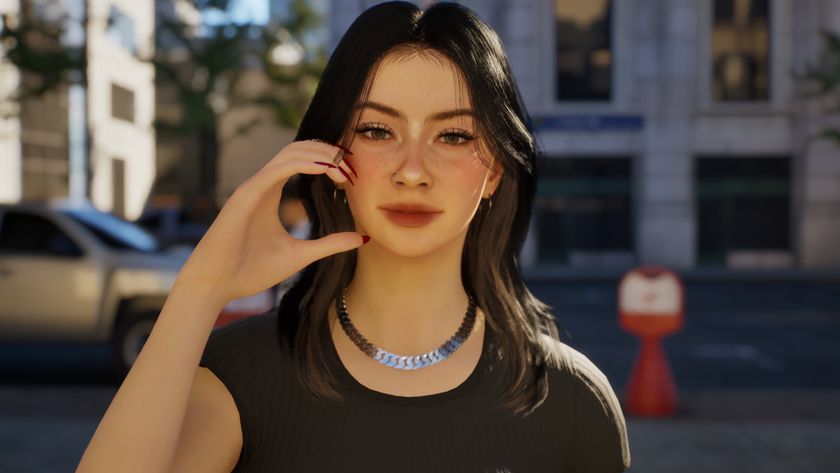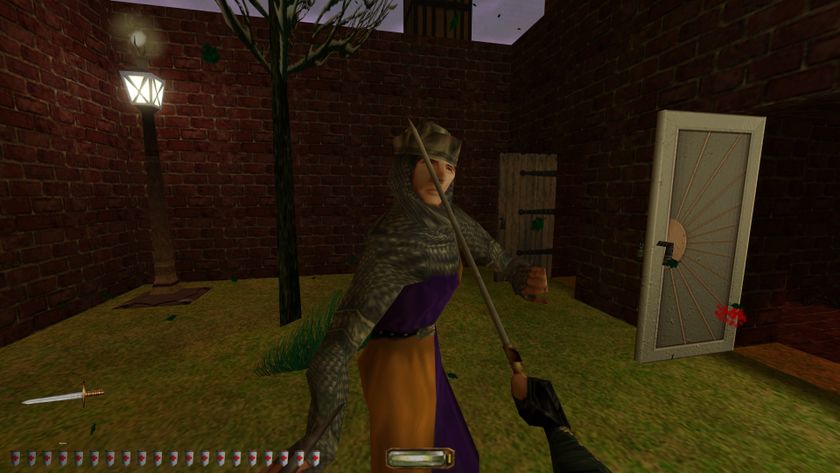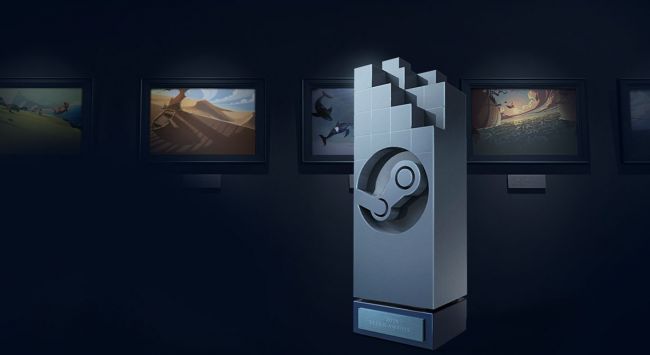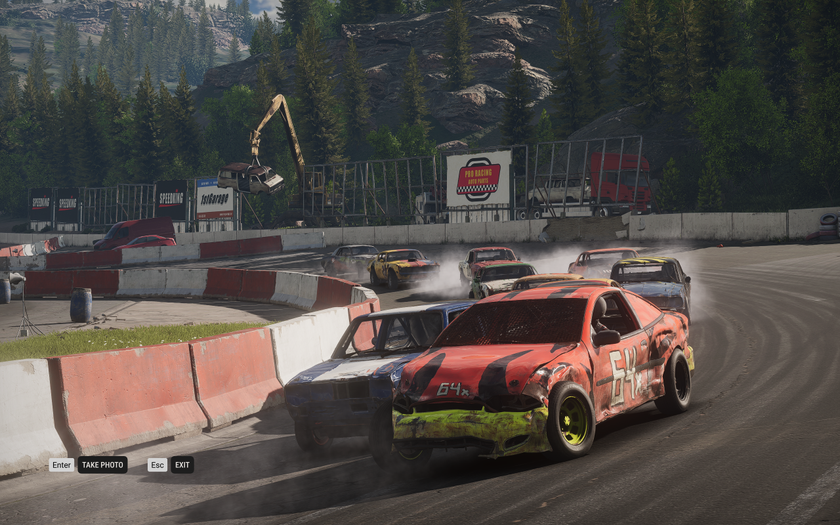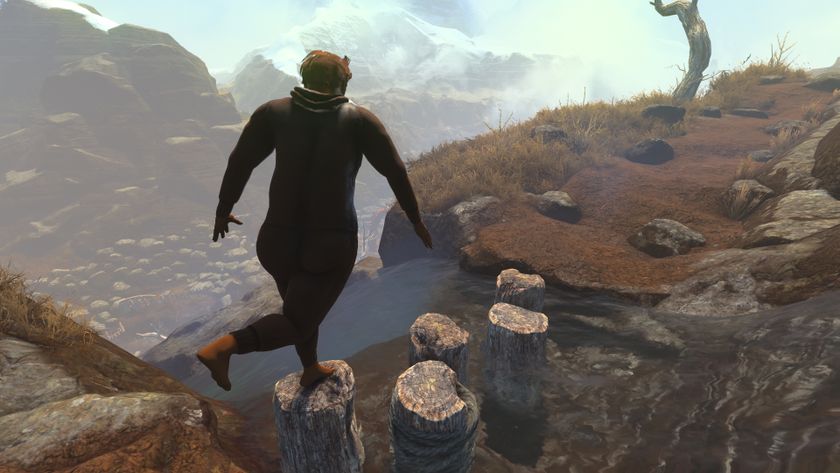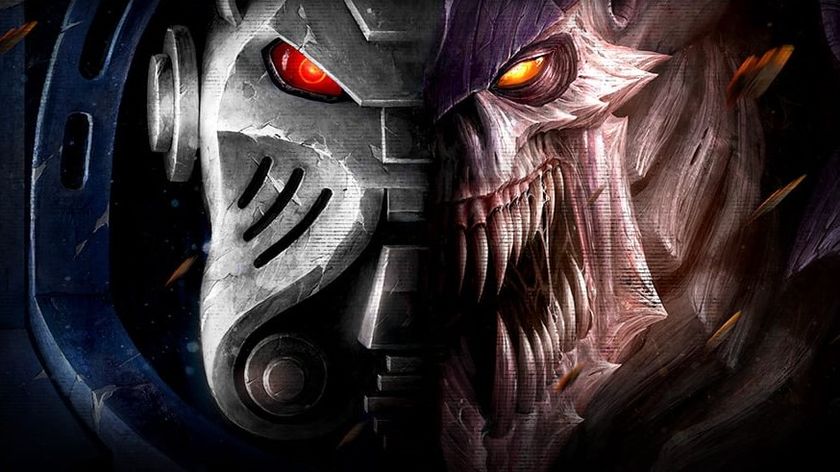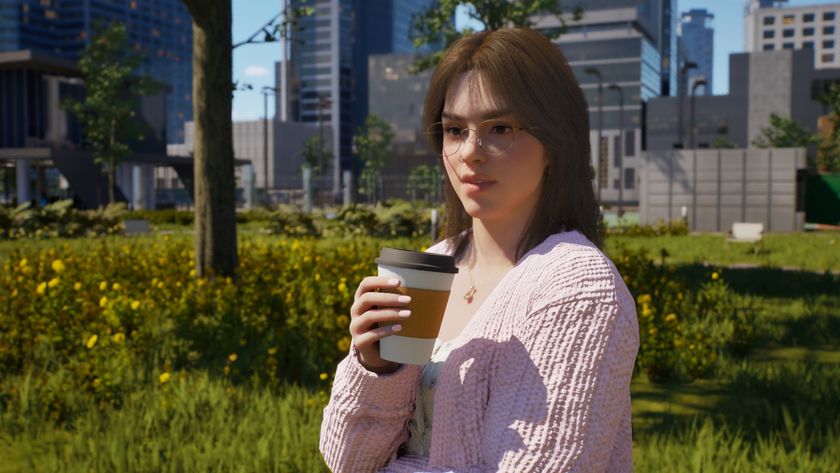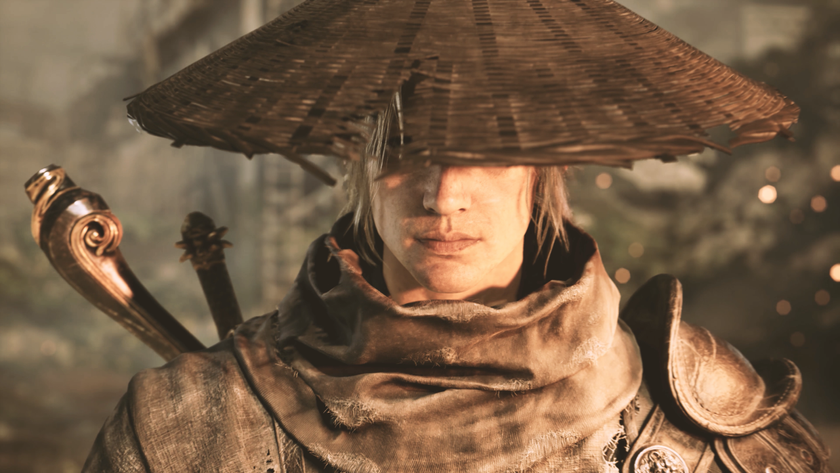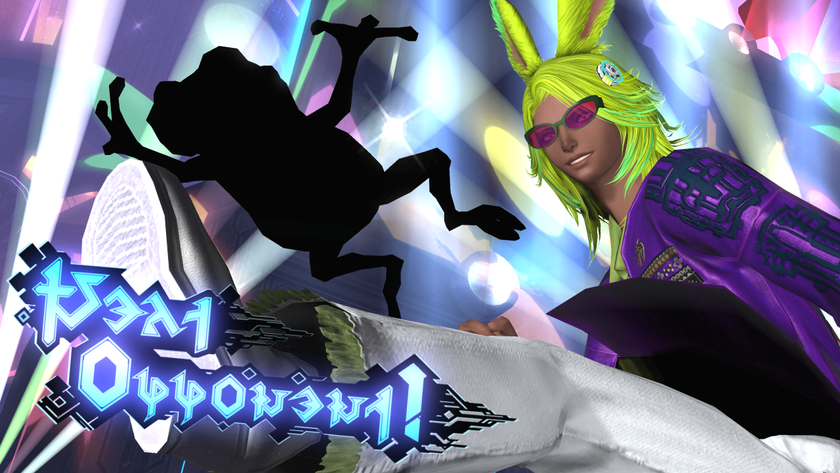Story comes first in the making of Cyberpunk 2077
We speak to CD Projekt Red about the granular details of 2018's biggest reveal.
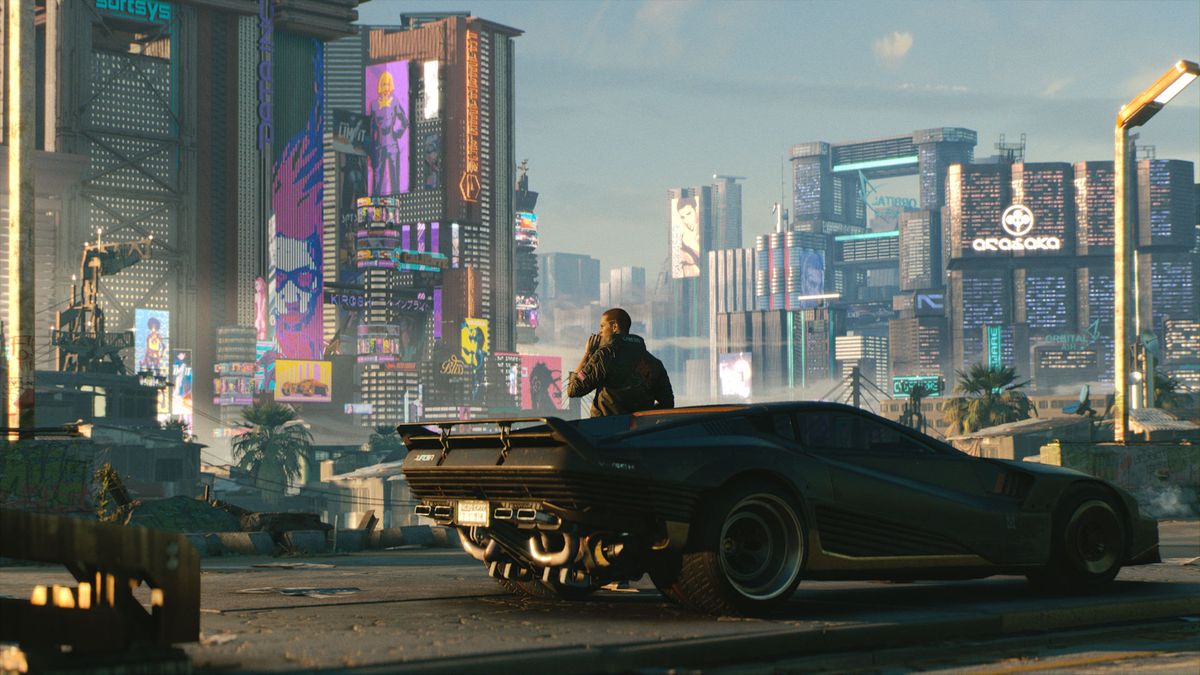
This feature originally ran in PC Gamer UK 324 in October. For more great features delivered to your door, check out our subscription offers.
You’ve seen the Cyberpunk 2077 demo by now. After keeping it behind closed doors at E3, the Polish developer suddenly released the entire thing on YouTube. It was a power move by a studio aware of how anticipated this follow-up to The Witcher 3 is, and the video is now sitting at over ten million views: figures usually reserved for Rockstar games.
When I sit down in a cavernous boardroom in the studio’s Warsaw headquarters to see the game, I’m aware it’s the same demo. But the difference is, this one is just for me. The developer manning the controller tells me he’s relieved there’s no time limit, no queues of hundreds of people waiting eagerly outside, and he takes the opportunity to give me a slower, more detailed demonstration, stopping to take a closer look at things. It’s a game world that aches to be studied and scrutinised, with a cluttered, lived-in feel that few virtual worlds manage to accomplish this well.
One of the most striking things about the game’s setting, Night City, is how vibrant it is compared to the dark, rain-soaked dystopias usually associated with the genre. Cyberpunk 2077 is set in a future California, and writer Stanislaw Swiecicki tells me that the studio is going to great lengths to capture the Golden State’s distinctive atmosphere.
“We want to give Night City a Californian feel,” he says. “It’s not just another abstract dystopia. I visited LA for the first time this year and it was very inspiring, especially walking along Venice Beach. We want to bring some of that vibe to the game. The sun, the palm trees, but a darker side, too. It’s an incredibly diverse place, with all these different people, fashions and cultures sharing the same space, but it can also be dangerous.”
As we walk through Watson, a bustling shopping and entertainment district bombarded by neon billboards, the passing hordes of citizens give me a sense of this diversity, and I don’t see one repeated character model. Crowds are generated semi-procedurally to avoid repetition, mixing body parts, faces, clothes and hairstyles, and CDPR promises the finished game will feature an even greater variety of heights, weights, and body shapes.
“Watson is a multicultural district with a strong Asian influence and a rising crime problem,” says Swiecicki. “But there are other districts too, each with their own unique feel. Westbrook is where the middle classes live; Heywood was once home to the tech giants, but abandoned and left to rot; and Pacifica is a suburban district ruled by gangs, and the most dangerous place in the city. Wherever you are in the city, there’s a layer of darkness.”
The biggest gaming news, reviews and hardware deals
Keep up to date with the most important stories and the best deals, as picked by the PC Gamer team.
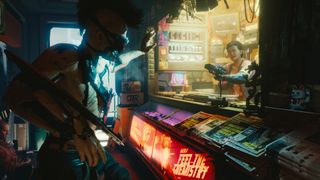
The complexity and fidelity of the city is astonishing, both on a grand scale and in the finer details. The entire game is first-person, viewed through hero V’s eyes, letting you get closer to the world than Geralt ever did. A street market is a particular feast for the eyes, with dozens of vendors hawking their wares and flipping heaps of sizzling noodles in woks. Above them digitised petals fall from a holographic cherry blossom tree and trains skim silently along monorail tracks. I’ve never experienced such a dense videogame city before, which extends to the audio design. The sound of people talking, sirens blaring, music playing and those ever-present advertising billboards chattering over the top of one another in a dozen languages only adds to the turmoil.
“The devil is in the details,” says Maciej Pietras, lead cinematic animator. “The third-person camera in The Witcher floated slightly above NPCs, which we took into account when animating them. But now you can really look at what they’re doing up close, and we’ve improved the animation to reflect this. When we animate characters, even the NPCs, we think about their personality and their past. The way they move or something in their face might reveal something about them. We work from the inside out.
“We also changed the way we do facial animation, moving to a new muscle-based system,” Pietras adds. “We have a huge library of facial animations, which I think is important in a first-person game. You can get close to people now, and this new tech lets us pick out more subtle details in the faces. When you first see a street vendor he’ll be trying to sell you something, calling you over to look at his food, and you should be able to see enthusiasm in his face as well as his body language.”
Close up
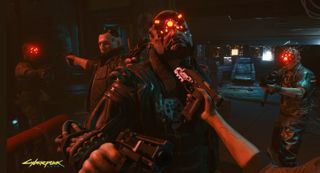
In the waiting room of Dr. Victor Vector, a so-called ripperdoc specialising in cybernetics, I ask the guy playing the game to stop and use V’s new ocular implant to zoom in on some of the props in the room. In the YouTube demo the person playing dashes through here without stopping, but taking a closer look, it’s a remarkably detailed space. I see rows of maneki neko on a shelf (those little waving cats believed to bring good luck) and a gorgeously detailed statue of an oni, a Japanese demon, shrouded in incense smoke. I also get a closer look at Vector himself, who’s watching a boxing match on TV, and has a boxing glove-shaped pendant hanging from his neck.
What we’ve seen of Cyberpunk 2077 so far has been largely focused on action, but Swiecicki reassures me that this is just one aspect of the game. “Some cyberpunk is more pulpy and driven by action,” he says. “Stuff like Terminator or RoboCop. But then there’s the more philosophical side of the genre. Think Blade Runner or Ghost in the Shell. Our mission is to give players strong elements of both. You’ll experience the thrill of using cybernetic implants and high-tech weaponry in combat, sure, but there’s also depth in the story. We want to ask questions about what identity and individuality are in a world where people are so closely connected with technology.”
The focus on action in a demo, Swiecicki explains, was a result of them wanting to show off as many game systems as possible. “Storytelling is hugely important to us as a studio,” he says. “We want to tell stories that resonate with people on an emotional level and ask important questions. So there will be a lot of that in the actual game. It’s an important part of the genre.”
Even though I’ve seen the demo several times, including once up close and personal, and heard a lot about it, there’s still an air of mystery around the game
Pietras adds that everything starts with story at CDPR, and that every department, from quest design to cinematic animation, has an intimate working relationship with the writers. “In one scene the writers wanted Meredith Stout, a corporation boss, to look visibly nervous and frustrated, because she knows someone in her corp is trying to screw her over,” he says. “So we took that direction and animated her accordingly.”
Another of CDPR’s high level goals for Cyberpunk is making the game as seamless as possible, from being able to move around the city without any loading breaks, to conversations. “In The Witcher you talk to someone and there’s a transition to dialogue, then back to the world when you’re finished,” says Swiecicki. “But here we want the blend of story and action to be seamless, which is really challenging from a writing perspective. If you turn and look at something during a conversation, we want the NPC to notice. We want the reactivity in the game to be super high. It’s almost like you’re an actor in a scene, rather than just passively watching it play out.”
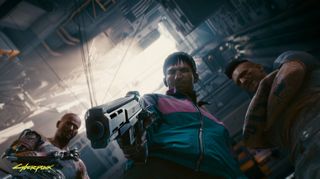
While Geralt was an established character with a long history, V is much more malleable, allowing for a deeper roleplaying experience. “The key rule for us is that V is you,” says Swiecicki. “The choices you make will affect the story and shape the character. But at the same time, V is not a blank slate. They’re a mercenary on the rise, they want to become a legend in Night City. There’s a character there, but you get to play around with them and give them more shades than you could with Geralt. The game is a journey and there is an end to it, but you get to decide which paths V takes to get there.”
One of the major ways you’ll shape V is through quests. “We want the characters you meet in the game to respond to you and your actions,” says Patrick Mills, quest designer. “That’s not just about having enough points in a certain stat or something like that. Instead it’s like ‘Did you talk to that guy earlier? What information did you get?’ If you found the information, you can use it later. If you killed the guy’s friend instead of doing something for him, he won’t help you anymore. We love that kind of reactivity.
“It’s a major goal of ours to make sure all of our quests say something about the world,” he adds. “Sometimes we’ll just want to explain how something works and build a quest around that. Other times we’ll be going deeper into a theme that’s only touched on in the story. Or maybe it’s driven by character and the quest is built around a personal journey. Our quests are about building the world, setting the mood, and exploring themes.”
Mills explains that the quests he designs are fed back to QA, which will give them a ‘logic pass’, outlining things they think they should be able to do. If it makes sense for the player to solve a problem in a particular way, CDPR wants to cater for it. “There is room for emergence,” he says when I ask if the game will share any qualities with immersive sims such as Deus Ex. “It’s not exactly Breath of the Wild, but it does happen. We’ll build something imagining players doing it a certain way, but QA will play it and say: ‘I should be able to do this.’ Then that gets added, and the complexity increases. So interesting stuff emerges more from the logic than the systems.”
Job centre
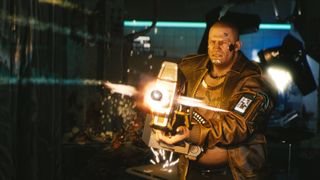
The future setting also gives CDPR many more ways to throw quests at you. “Having a setting with telecommunications makes all the difference,” says Mills. “It’s also more immersive. How do you get a ‘quest’ in the real world? Usually it’s a phone call or a text message: ‘Can you go pick up groceries?’ Our open world team is constantly filling the city with little events that can feed into quests. You’ll see some dudes on the street, and eavesdropping might lead to a quest. Or maybe because you talked to them, you might see them a couple of hours later in another quest and get some reactivity there.”
“Compared to a medieval world, a bustling metropolis is much better for drawing players into quests,” adds Swiecicki. “You’ll be walking along the street and suddenly you’ll be drawn into a story. There are so many narrative hooks that can lure the player in, and that’s something we love doing. People loved the quests in The Witcher that would start out simple but grow into something bigger, more complex, and we want to bring that to Cyberpunk.”
Ask someone what their favourite quest in The Witcher is, and chances are it’ll be a sidequest. CDPR is one of the few devs which makes optional quests that are worth your time—something it hopes to bring to Cyberpunk. “A lot of us really prefer working on sidequests, because you can tell self-contained stories,” says Mills. “We’re also aiming to make the production values as high as, or close to, the critical path. There’s a length limitation, so we can’t really rely on a full three act structure, but we want to make sure there’s something unique and cool about all of them. If I proposed a quest that was to go and recover a stolen item for someone, then bring it back to him, that would not be approved. That’s fine for smaller events, but a quest has to have something you’ve never seen before.
“I wish I could give examples, but one of the things I most enjoy is creating quests that fully subvert your expectations. One of my favourite encounters I designed for The Witcher 3 was being approached by a taxman, which triggered if you were carrying a lot of coin. He shows up and asks you where you got all your money, and calculates how much tax you owe. These are the kinds of things that flesh the world out, and I want to do something similar in Cyberpunk. This isn’t just a world where people are shooting each other all the time. Yeah, you’re a mercenary, so your job is shooting people, but you’ll have other things to do as well that are very different.”
During the hour I spent interviewing these three developers, not once did any of them go into specifics about story, quests, or anything else for that matter. CDPR is keeping Cyberpunk 2077 extremely close to its chest, and I could see the developers internally wrestling with themselves, trying not to go into the particulars of what they were talking about. So even though I’ve seen the demo several times, including once up close and personal, and heard a lot about it, there’s still an air of mystery around the game. I’m remaining cautiously optimistic until I actually get my hands on the thing and really test the limits of the quest design. But until then I’m still hugely excited about what CDPR has planned, and can’t wait to explore the streets of Night City.
If it’s set in space, Andy will probably write about it. He loves sci-fi, adventure games, taking screenshots, Twin Peaks, weird sims, Alien: Isolation, and anything with a good story.
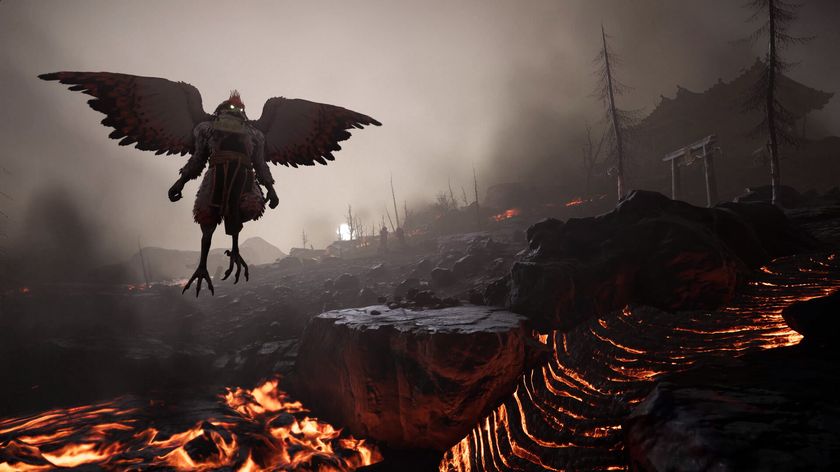
Tactical RPG Shadow Of The Road's open Alpha test lets players get a free first taste of its samurai versus steampunk setting
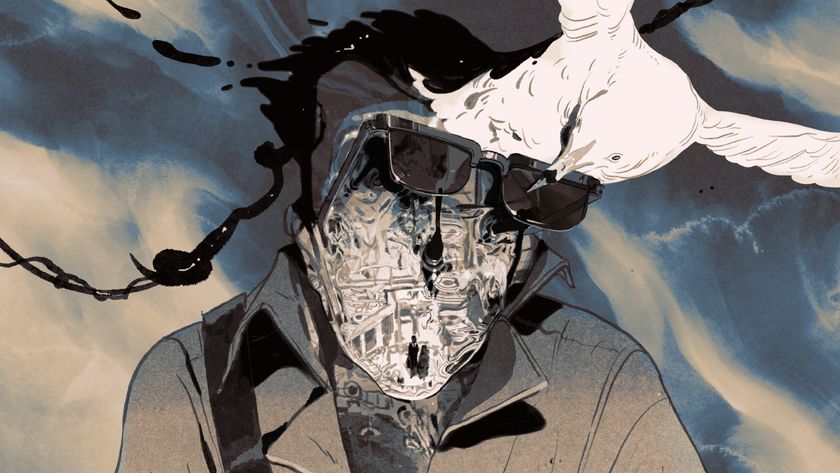
I've finally seen gameplay from ZA/UM's follow-up to Disco Elyisum, and it looks a lot like Disco Elysium. It will have to be spectacular to win back a hostile fanbase

